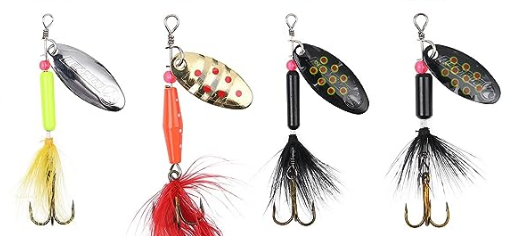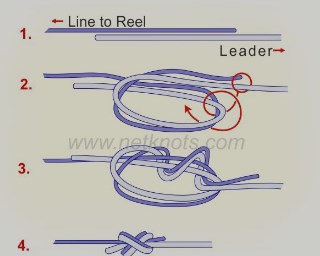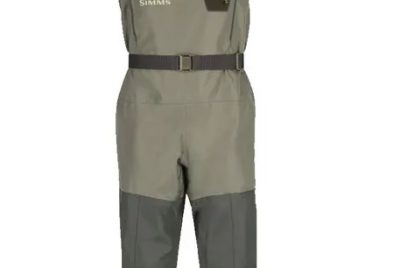Fly Fishing Lures
Introduction
As a devoted fly angler, I have experienced the thrill of using fly fishing lures to entice fish and indulge in the art of angling. Fly fishing lures are not just pieces of feather and thread; they are carefully crafted imitations designed to imitate natural food sources and trigger the predatory instincts of fish. In this article, I invite you to delve into the world of fly fishing lures and discover the secrets to successful angling.
Understanding Fly Fishing Lures
Fly fishing lures, also known as flies, are artificial imitations made to resemble insects, baitfish, and other aquatic creatures that fish prey upon. These lures are meticulously tied with a combination of natural and synthetic materials to achieve lifelike appearances and enticing movements in the water.
The Art of Selecting the Right Fly Fishing Lure
Choosing the right fly fishing lure is crucial for enticing the target species and maximizing your chances of success on the water. Factors such as water conditions, time of year, and the fish’s feeding behavior play a significant role in selecting the most effective lure for the job.
Exploring Various Fly Fishing Lure Patterns
Fly fishing lures come in an array of patterns, each designed to imitate specific food sources or trigger aggressive responses from fish. From delicate dry flies to streamers that mimic wounded baitfish, understanding the characteristics and uses of various lure patterns is essential for any angler.
The Versatility of Dry Flies
Dry flies are a classic and time-honored lure choice for fly anglers. Designed to float on the water’s surface, these lures imitate insects and attract fish that feed on the surface. Their versatility makes them suitable for various fishing scenarios.
Nymphs – The Subsurface Attractors
Nymphs are flies that imitate the immature stage of aquatic insects, which are a significant food source for fish below the surface. Learning to fish nymph effectively can yield impressive results, especially when fish are not actively rising to the surface.
Streamers for Aggressive Predators
Streamers are large, flashy flies designed to mimic small fish or other prey items. These lures are particularly effective for attracting aggressive predators and eliciting powerful strikes.
Wet Flies – The Timeless Classics
Wet flies are versatile and versatile lures that can be fished at different water depths. They imitate various aquatic insects and are especially effective during insect hatches and when fish are actively feeding near the bottom.
Emergers – A Special Niche
Emergers are a unique category of flies that imitate insects transitioning from the water’s surface to the air. These subtle lures can be highly effective during insect hatches and transitional periods.
Terrestrials – A Summer Favorite
Terrestrial patterns imitate insects that fall onto the water from land, such as ants, beetles, and grasshoppers. These flies are particularly effective during the summer months when terrestrial insects are abundant near the water.
Attractors and Stimulators – Standing Out from the Crowd
Attractor and stimulator patterns are bold and attention-grabbing flies designed to provoke aggressive responses from fish. Their bright colours and exaggerated features make them stand out in the water and entice even the most cautious fish to strike.
The Allure of Artificials
Fly fishing lures are incredibly effective at tricking fish into striking, even though they are artificial imitations. Fish are naturally attracted to these lures due to their lifelike appearance and enticing movements.
The Magic of Presentation
While the fly itself is vital, the way it is presented on the water is equally essential. Proper presentation techniques, such as drifts, swings, and retrieves, can make all the difference in enticing fish to bite.
The Thrill of the Strike
The moment when a fish takes the fly is one of the most exhilarating experiences for any angler. The adrenaline rush and the connection between angler and fish create unforgettable memories that stay with us forever.
Conclusion
Fly fishing lures are more than just tools for angling; they are artistic creations that deceive and delight fish. I encourage every angler to explore the world of fly fishing lures and unlock the secrets to successful angling. By understanding different lure patterns and mastering presentation techniques, you can enhance your fishing experience and connect with nature on a profound level.
FAQs
1: What is the best time to use dry flies?
Dry flies are most effective when fish are actively feeding on the water’s surface. This often occurs during insect hatches, early mornings, and late evenings.
2: Can I use the same nymph pattern for different species of fish?
Yes, certain nymph patterns can imitate a variety of aquatic insects, making them suitable for different fish species in the same habitat.
3: How do I retrieve streamers effectively?
Streamers can be retrieved in various ways, such as steady strips, erratic jerks, or slow swings. Experiment with different retrieves to see what entices fish in your fishing area.
4: Are wet flies suitable for stillwater fishing?
Yes, wet flies can be effective for fishing in stillwater environments, especially when fish are feeding below the surface.
5: Do attractor patterns work in clear water conditions?
Yes, attractor patterns can work well in clear water conditions, as their bold colors and unique designs can attract fish from a distance.




